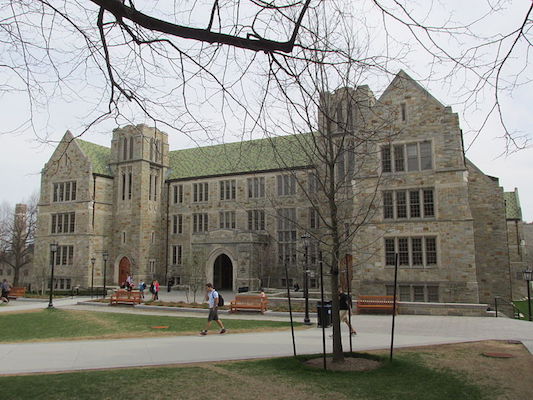College debt proves undue burden on undergraduates

Boston College, where annual tuition is $65,644 for the 2016-17 school year.
December 22, 2016
After sleepless nights, hundreds of coffees, countless extracurricular activities and copious amounts of standardized testing, you are accepted into your dream college – and you are thousands of dollars in debt.
Punished for pursuing higher education, 60 percent of college graduates enter the workforce toting hefty amounts of student loan debt, according to Lend EDU. Over 43.3 million college students trade pristine credit scores and debt-free lives to take out student loans in hopes of obtaining a high-paying job for a reasonable return on investment.
In 1987, a New York Times article listed America’s top ten costliest educational institutions. The tuition for each school was under $18,000. For example, an undergraduate degree at Columbia University totalled up to $17,120 per year in 1987; adjusted for inflation, this would be about $36,430 in 2016. Now, according to College Data, admission to Columbia University today not only requires high grades, SAT scores and writing supplements, but also $71,690 for annual tuition.
Schools like Columbia University offer financial aid to lessen the blow of the excessive price. Yet, the notion of charging a single student upwards of $250,000 for a college education is, in the first place, outrageous.
College tuition is astronomical for the average family.
CNN reported that in 2014, a typical American family earned only $53,657 per year. In short, even a year’s worth of work can not cover a year of college tuition. This is not taking into account expenses such as groceries, insurance and mortgage payments that normal families must pay.
Not only has tuition risen to unfathomable numbers, the admissions process has become a business in its own right. College Board – the non-profit organization that administers the SAT – cashed in with net revenues at $65.6 million in 2010, according to The Hechinger Report. To take the SAT with essay, College Board charges $57 per registration.
Combine SAT fees with pricey test-preparation programs like Princeton Review, whose “Immersion” course costs $1,999 according to their website, high school students are looking at an exorbitant amount of money for a necessary degree to obtain a job and a college education less about learning, more about money.
As I venture into exploring college campuses and various majors, I – a 17 year-old teenager – must also take into account how much debt I want to carry going in to my career and that is altogether unacceptable.




